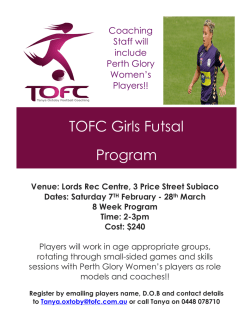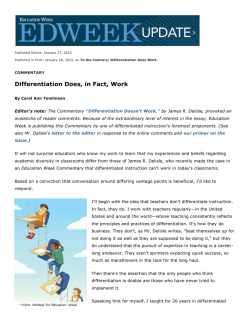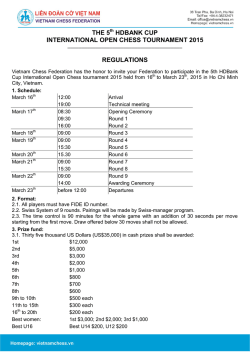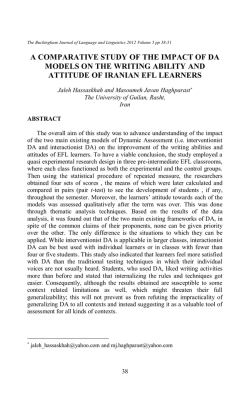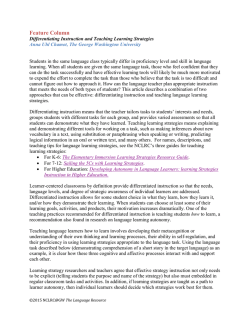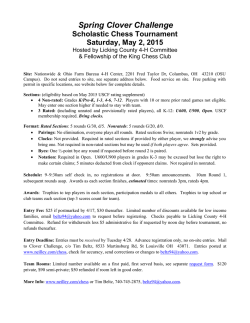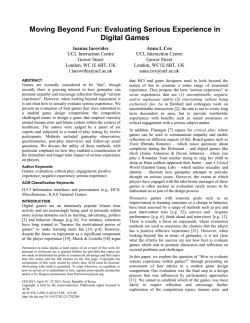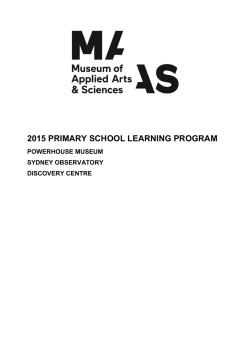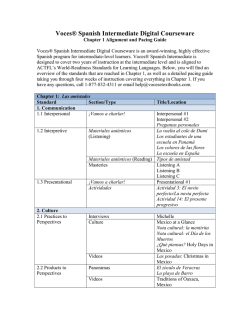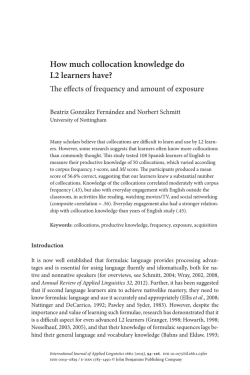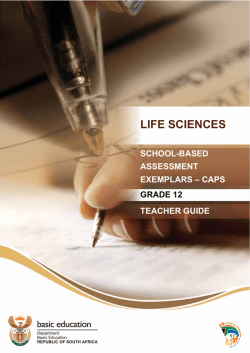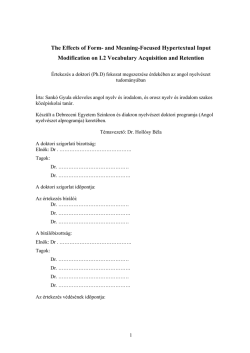
1 Design Principles for Video Games as Learning Engines James
1 Design Principles for Video Games as Learning Engines James Paul Gee Mary Lou Fulton Presidential Professor of Literacy Studies Regents’ Professor Arizona State University [email protected] The literature and research behind the principles below are discussed in my books What Games Have to Teach Us About Learning and Literacy (First Ed. 2003; Second Ed., 2007); Situated Language and Learning: A Critique of Traditional Schooling (2004); Why Video Games are Good for Your Soul (2005); Good Games and Good Learning: Collected Essays (First Ed., 2007; Second Ed., 2013); Women and Gaming: The Sims and 21st Century Learning (with E.R. Hayes, 2010); Language and Learning in the Digital Age (with E.R. Hayes, 2011); The Anti-Education Era: Creating Smarter Students Through Digital Media (2013); Unified Discourse Analysis: Language, Reality, Virtual Worlds, and Games (2014); and Literacy and Education (2015). All these books are available on Amazon.com. In a couple of cases below I have added citations where I have directly taken a key expression or point from someone else. The principles below will apply differently in different games and some will be more prominent in some games than in others. I view all good video games as well-designed learning experiences and all good teaching as a design science similar in many respects to video game design (design in the service of welldesigned experiences for learning with or without games). 1. Games are well-designed experiences in problem solving Humans learn from experience, but only from well-designed experiences. They learn best when they have an action they need to take; when they care about the outcome of the action; when they are helped to manage their attention (see 2); and when they are helped to evaluate the outcomes of their attempts at success and to know how to “go on” (what to do next) when they are not successful. Games are vicarious experiences that are well-designed for learning to solve problems. 2. Manage attentional economy Learners must be helped to know what to pay attention to in an experience. They must know what to foreground and what to background. They must be helped to avoid cognitive overload. Without help, experiences (real or virtual) can become sensually overwhelming. 2 3. Motivation, engagement, grit, and identity The experience must be well designed to help create motivation and “grit” (persistence past failure). The goal in a game is not to create fun, but to create engagement that keeps learners going past challenge, frustration, and failure. 4. Game mechanic + content must be well matched The game mechanics in a game (the actions players engage in) must be well matched to the content of the game (content = the problems to be solved). When game mechanics are not well matched to content we get a bad game and, in the learning space, a “chocolate on broccoli” game. 5. Make sure the game mechanics work well (never let players fail to know whether it was them or the game mechanic that failed) It is crucial that when players take an action, they clearly know that any failure was due to their own efforts and not due to implementation of the game mechanics themselves. 6. Game mechanic should be “fair” and “deep” “Fair” means failure is not set up by the game design or game mechanics, but only by the player’s own actions (see 5). “Deep” means that the mechanics look simple at the start, but, as players play more, they discover that these mechanics can do more and more and can achieve deeper and deeper results. 7. Make an easy on-ramp Players need to have early successes and learn to get comfortable with the game mechanics and format before failure and challenge sets in. 8. Create flow Start with a type of problem that feels challenging, but doable. This should create a little stress, but not too much. A good deal of practice then leads to a remaining sense of challenge, but a sense of growing confidence and mastery. This is the state of “flow” proper. Finally, players feel that things are easy and they are now masters. They enjoy this for a short while and then want and need a new challenge. 3 9. Create the cycle of expertise: practice-mastery-challenge Players need to practice a challenge so much that eventually the needed skills become routine and “black-boxed” (put on “automatic pilot”). Once skills are routine, present players with a new challenge, one that forces them to reflect anew on their now automatic skills, practice something new, and integrate new skills with old ones. This new skill—well integrated with old ones—itself now needs to become routine and then the player needs to be presented with yet another new challenge in order to keep ramping up the skill tree. 10. Order the problems well: generative problems early Problems need to be ordered so that the early problems players face lead them to form good hypotheses that work for later harder problems. Such problems are generative of good ideas that work well across a later trajectory of problem solving and combine well with new ideas. If learners work on the wrong problems early on, they can find creative solutions that never work again later and lead down “garden paths”. 11. Use just enough surface knowledge to allow learn by doing Learners often need some rather superficial facts that are necessary background knowledge for deeper conceptual and skill-based knowledge. They should get just enough of these to allow them to learn by (well-guided) doing. 12. Use facts as tools for solving problems Beyond some early superficial knowledge, facts should be used (repeatedly) as tools for problem solving, not as things to be drilled on for their own sake. Skilling and drilling on facts can lead to fact retention, but it does not lead to problem solving. Repeatedly using facts as tools for solving problems leads both to fact retention and problem solving abilities. 13. Place skills and practicing skills under goals and strategies Humans learn by practice and they need lots of it. But practice is more motivating and leads to deeper understanding when what is being practiced is placed in the context of strategies, tactics, and goals needed for problem solving. 14. Situate meanings for words, symbols, and representations in images, actions, goals, experiences, and dialogue (not just other words) Words can get meaning from other words (“definitions”) or they can get meaning from being associated with actions, images, experiences, goals, and dialogue, that is, by being associated with the worlds the words are about. Such meanings are called “situated meanings” or “embodied meanings”. Situated meanings are necessary for deep understanding and only after 4 a learner has situated meanings in a given domain (e.g., in physics, the game Civilization, cooking, etc.) can the learner learn well from texts alone. 15. Give language ad information “just in time” and “on demand” Language and information out of any contexts of applications or learners’ felt needs are not deeply useful. Language and information should be given “just in time” (a small amount that can be immediately put to use where the learner can check whether the language or information worked in application and was understood) or “on demand” (larger amounts given when learners know they need it, want it, and are ready for it). 16. Create fish tanks and sandboxes “Fish tanks” are games or game levels that take a complex system with many interacting variables and simplify the system so that learners can clearly see and make hypotheses about a few clear and important variables and interactions. “Sandboxes” are games or game levels where players can “play around” and freely explore variables with a low risk of failure or danger. 17. Give lots of actionable feedback Feedback is only really useful when it contains information that lets learners know how much progress they have made and what sorts of things they should think about or try next. Feedback should assess authentic progress and effort towards mastery; it should not tell learners only that they are “good” or “better than others”. Good learning encourages a “mastery orientation” to learning (where learners want to improve their own performance) and not just a “performance orientation” (where learners want to improve their competence in order to receive praise or to better others). See: Schraw, G. (1998). Promoting general metacognitive awareness. Instructional Science, 26, 113-125. 18. Designers need to get feedback to know whether things are working Teachers and designers need to actively seek data that demonstrate that learners are actually learning and that show when and where things are working or are not working. Feedback is a two-way street between learners and teachers/designers. Games need to give feedback to players, but games also need to get feedback from players. 19. Lower the cost of failure; encourage exploration The cost of failure must not be so high as to discourage exploration, risk-taking, and trying out new ways of learning and performing. Learners need to be encouraged to explore and not just to move on too quickly to their goals; they must be encouraged to rethink goals from time to time and to innovate. They should be encouraged to try to solve problems in multiple ways. 5 20. Offer choice and customization Choice and action are at the heart of video games. Choices motivate learners. Furthermore, learning to make good choices and learning what counts as a good choice in a domain are core skills that correlate well with tests of knowledge and with future success. Often it is better to assess choice and not knowledge alone. See: D. L. Schwartz & D. Arena, Measuring What Matters Most. Cambridge, MA: MIT Press, 2013. Customize game play to the levels, needs, backgrounds, and strengths of different players in terms of their progress and choices, but without removing challenge and without removing the need to sometimes adapt to other people in collaborative teams. 21. Assess growth and trajectories In the age of “Big Data” and data mining, assessment should be based on multiple variables of growth across time and in comparison to multiple trajectories to mastery being taken by many other learners. No more “drop out of the sky” tests. 22. Integrate learning and assessment Design learning so well that finishing a game or a level is already proof of learning. At their best, games can equally be seen as constant learning or constant assessment—the difference collapses. Collect copious data across play and use the data, represented in different ways, to resource the learner’s learning (“formative feedback”) and to resource others (teachers, parents, institutions) to assess and improve learning systems (“summative assessment”). 23. Encouraging modding and making Encourage in learners a “modding attitude”. This means that learners learn to think like designers as they play and that they learn to design, mod, produce, and make and not just to consume and spectate. 24. Encourage system thinking, model-based thinking, and thinking like a designer Games are systems in which rules interact. Players need to model in their heads how these rules interact, so that they can use these interactions to accomplish their goals and even obtain emergent results. Model-based thinking (thinking by using models that capture salient aspects of complicated systems without having to confront all the complexity of such systems all at once) is the very basis of scientific thinking. 6 25. Create collective intelligence: multi-player formats and interactions inside and outside the game that make groups smarter than any individual in them Collective intelligence demands networking people and tools so that the system, team, or group is smarter than any one individual in it. Such networks use “wisdom of the crowd” principles, as well as the best principles of socio-technical engineering, social intelligence, collaboration, and smart tools. 26. Don’t try to do everything in the game or with games: Build learning systems Textbooks are tools that are meant to be a “one-size-fits-all-for-everything” approach and they are one of the worst educational inventions in history. Use games, game levels, and game genres for what they are best at and for. Network them with other tools, digital media, social media, activities, practices, sites, institutions, and groups, inside and outside games, to create a whole “connected” learning system (a system also well connected to yet other learning systems). 27. Big “G” Games and affinity spaces A game is a piece of software. When it is connected to well-designed social interactions inside and outside the game, we have a good “meta-game” built around the game. The combination of game as software and a good social meta-game I call a “big G” Game. Good designers design Games not just games. One important part of the meta-game today is what I call “Passionate Affinity Spaces”. These are spaces—often on the Internet—where people engage in joint production, discussion, innovation, and problem solving because of a shared passion (for a game or cause) not because of shared race, class, age, ability, or level of expertise. Such spaces are places that organize learning “bottom-up” without the domination of an institution or a credentialing system. 28. Deliberate learners The goal of good learning and good play is the production of “deliberate learners” or “deliberate players”. These are learners and players who can reflectively design and manage their own learning, play, innovation, and new goals for mastery. They manage all the above principles for themselves or they seek out well-designed experiences that activate these principles and they know these well-designed experiences when they see them.
© Copyright 2025
